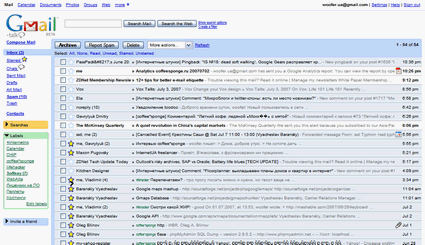Many people are used to using "hotkeys" in software on your computer. Yes, there's nothing to be cunning about, before the advent of a computer mouse with all programs, that's exactly how they worked. Now, although the mouse has facilitated human interaction with the user interface, it is faster and more convenient to perform many actions with the help of "hot keys".

Today we will describe which keys will speed up the work with the most convenient webmail for today - Gmail. The listed keys work in the Gmail interface only if the English layout is enabled.
with — new email;
/ — moves the cursor to "search";
k — switch to a newer correspondence in the list of emails;
j — switch to an older correspondence in the list of emails;
n — next message;
p — previous message;
o or Enter — open a conversation;
u — go to the list of emails;
y — archive the email;
m — archives the current email, and also causes all linked messages to "fall" into the archive folder bypassing Inbox;
x — select correspondence;
! — report spam;
r — reply to the email;
a — reply to all recipients;
f — forward the email;
Esc — leave the search field;
Ctrl + s — save draft;
Tab -> Enter — send a message;
y -> o — archive the current correspondence and move on to the next one;
g -> a — go to the archive folder;
g ->s — go to the letters marked with an asterisk;
g -> c — go to the contact list;
g ->d — go to drafts;
g -> i — go to Inbox.
To be continued...